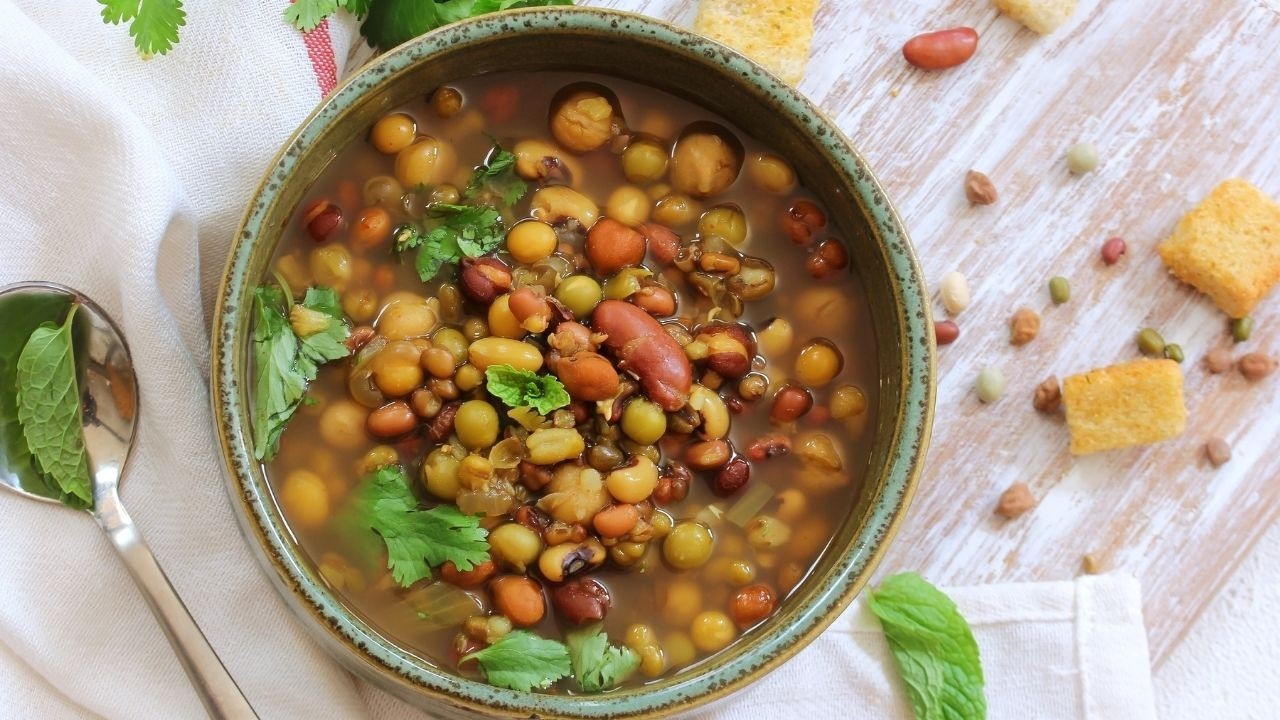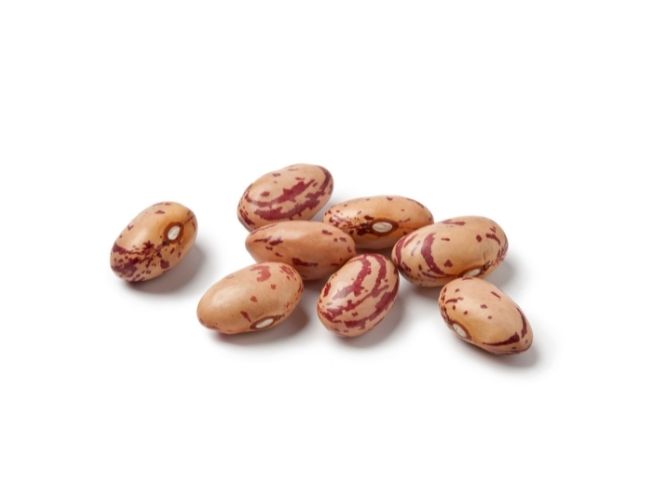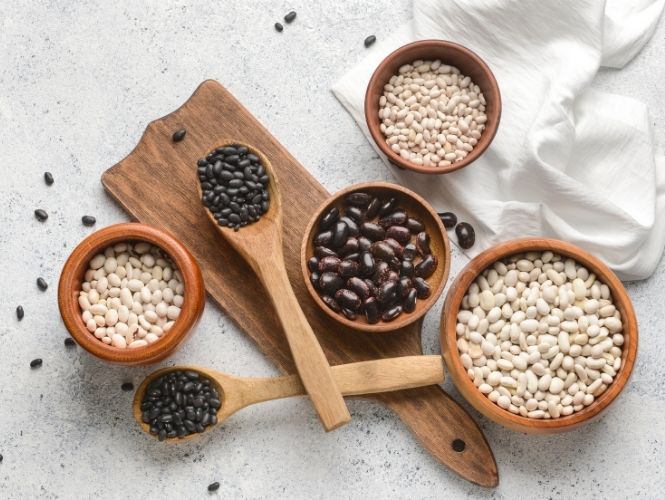How To Add More Beans to Your Meals…but With Less Gas
May 09, 2022
Pass the Beans, Please
What’s the hype with beans and just why are they good for you? Here’s the answer. Beans are part of the legume family and come packed with nutrients such as protein, fiber, vitamins, minerals, and many phytochemicals. Legumes form a key element of a whole food, plant-based diet, and bring a myriad of health benefits. These positive effects include improved serum cholesterol levels, less risk of diabetes and intestinal cancer, and an increase in the growth of beneficial bacteria and other microbes in our gut. Soluble dietary fibers have also been linked to cholesterol-lowering in blood.*
But for many, adding beans into meals sounds easier in theory than in practice. Maybe you’ve tried eating more beans before, but ended up with a big unpleasant increase in flatulence. No one wants to suffer in this area (or have loved ones do too), right? So what can you do? Read on!
Gas, Gas, and More Gas
First, you may be wondering, “Why am I experiencing this?”
One key reason is that beans contain rather high levels of non-digestible compounds called alpha-galacto-oligosaccharides (alpha-GOS). These are short-chain carbohydrates that are poorly digested in our gastrointestinal (GI) tract due to the lack of the enzyme alpha-galactosidase. However, in the colon, the gut microbiota uses these vital compounds along with soluble dietary fibers as fermentation substrates to produce short-chain fatty acids (SCFAs), resulting in a cascade of beneficial effects within the body. Unfortunately, during this fermentation process, gases (such as carbon dioxide, hydrogen and methane) can be released, causing problems of bloating and flatulence for some people.*
It's Not an Issue for All
It should be noted, though, that not everyone experiences excess flatulence and other symptoms when they move to a plant-based diet. For many, the transition is seamless as they add beans and other legumes to what they’re eating on a regular basis.
Why is this? Well, a lot of it depends on how you were eating prior to making the switch to a plant-based diet. Did you include beans, lentils, raw leafy vegetables or other higher fiber foods regularly in your meals? If so, your GI system likely has already made some adaptations and has the right microbes to be able to handle this different carbohydrate load you are feeding it.
Along with a low fiber diet, another factor to consider is how sensitive a GI system you currently have. For example, you may have severe Irritable Bowel Syndrome (IBS) or other medically diagnosed gastrointestinal issues, which impact your body’s current ability to process certain fiber-containing foods like beans and other legumes. This does not mean that you won’t be able to include many of these healthful legumes into your diet in the future, but in such cases, it is best to work first with your medical specialist individually to address the specific gastrointestinal issues you have, and follow their recommendations.
So know that although flatulence issues are real, it only occurs in a proportion of people during this transition phase, so it may not be a problem for you.
Ways To Reduce Gas from Beans
Alright, enough of the science. It’s time to get practical. If you’re experiencing issues with flatulence, how do you gradually up the bean factor in your meals without incurring these unpleasant side effects of more gas? Although you can get over-the-counter products containing digestive enzymes like alpha-galactosidase to help with the digestion of beans and other legumes, here below are 4 simple and natural strategies (out of many) that you can try to help you enjoy more of the delicious benefits of beans:

#1 - Soak Beans Well: If you are using dried beans instead of canned, be sure to soak the beans well first before cooking them. Try soaking them for at least 12 hours before cooking them. Even better, soak them for 24 hours, and change out the water once or twice in the process. Then drain and rinse these soaked beans well, before filling the pot with plenty of fresh water and cooking them.

#2 – Cook Beans Down Till Soft: After you have soaked the dried beans and rinsed them well, make sure to cook them in a fresh pot of water until they are really soft before using. Then try using these beans in soups, stews, curries, chilis or other recipes that involve a longer cooking time and will cook down these beans further.
Then over time as your GI system adapts, you may find that you are able to handle cooked beans of a slightly firmer texture without having an increase in flatulence levels. If you use canned beans, make sure to drain and rinse these beans very well first before using them. Then, if you notice an increase in flatulence, it may be wise to start out by using these canned beans in soups, stews and other dishes that require a longer cooking time first, so that these beans can be cooked down more before you eat them. #3 - Start Gradually: Another strategy is to build up the amount of beans you eat over time, instead of having large quantities immediately with every meal. Start with 2-3 spoonfuls of well-cooked beans in a meal then increase the amounts added gradually in the coming weeks.
#3 - Start Gradually: Another strategy is to build up the amount of beans you eat over time, instead of having large quantities immediately with every meal. Start with 2-3 spoonfuls of well-cooked beans in a meal then increase the amounts added gradually in the coming weeks.

#4 - Try a Variety
Some make the mistake of trying one kind of beans, like black beans, then getting gas issues and quitting the whole bean game. But don’t let a little gas stop you! Pick a few bean types to experiment with and try out – you might find some suiting you better at the beginning than others! One review of three studies showed that different beans may cause different levels of flatulence, and not everyone experiences flatulence when eating beans.* So find the beans that suit you and focus on keep eating them first, then branch out as you notice your levels of flatulence decreasing!
Here’s the good news: Often the unpleasant experience of excess gas is usually more common at the beginning of a plant-based diet transition, when you start to eat more beans and other legumes regularly. However, over time, your GI system does adjust as it begins to get used to a higher daily intake of fiber, so the flatulence does fade. This usually happens after 1-3 months of eating beans regularly.
Here’s our family’s experience: My husband and I didn’t experience much gas issues during our move to a plant-based diet, but I think that was likely because we made a gradual transition to plant-based eating over the space of a few months. In fact, my GI symptoms actually improved when I moved to this way of eating, as prior to this I was having unexplained intermittent bouts of diarrhea and a few other GI symptoms. My eldest daughter though, did have some gas issues, but it later stopped after she became used to eating this way. So know that gas issues associated with bean eating will usually improve over time as your body adjusts to a plant-based diet!
Have more questions about beans? Learn more about beans in my related articles on The Five Most Frequently Asked Questions (FAQs) About Beans and Canned, Frozen or Dried Beans – Choosing the Right Type to Buy!
(*Sources: Njoumi S, Josephe Amiot M, Rochette I, Bellagha S, Mouquet-Rivier C. Soaking and cooking modify the alpha-galacto-oligosaccharide and dietary fibre content in five Mediterranean legumes. Int J Food Sci Nutr. 2019 Aug;70(5):551-561.
Winham DM, Hutchins AM. Perceptions of flatulence from bean consumption among adults in 3 feeding studies. Nutr J. 2011;10:128. Published 2011 Nov 21.)
Before You Go, Grab this FREE Resource
If you’re wanting to learn how to start plant-based eating or to begin a whole food plant-based diet, grab this FREE resource “Beginner’s Quick Guide to Must-Know Plant-Based Diet Basics” to help you on your journey.
This FREE guide gives you the essentials you need to get started, including key terms to know about, rich plant-based sources of nutrients, and some top budget money-saving tips. This guide is perfect for all beginners interested in transitioning to a plant-based diet. So grab this guide if you’re looking for tips for eating a plant-based diet for beginners!



